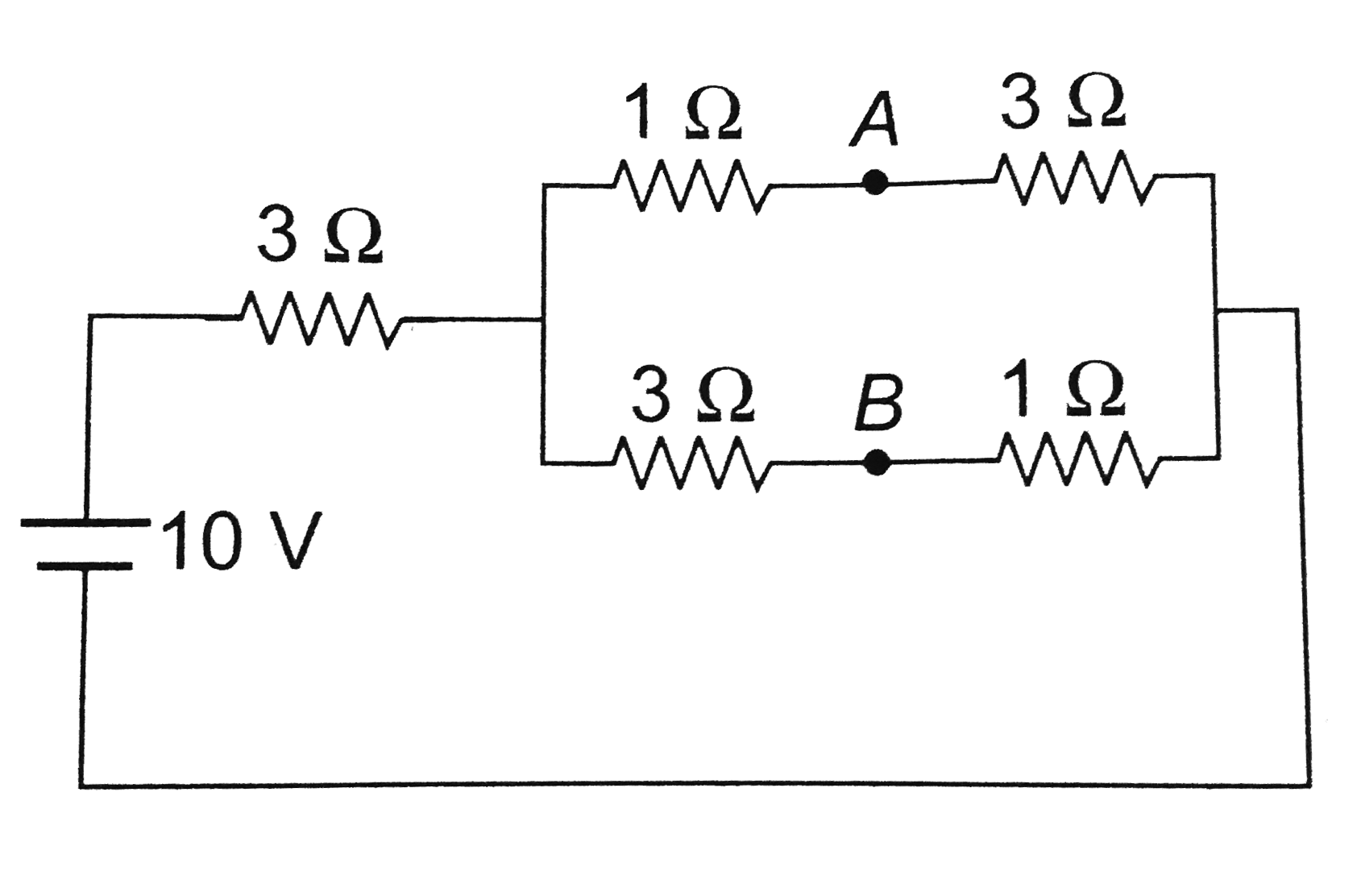A uniform electric field is along x-axis. The potential difference VA−VB=10V is between two points A (2m, 3m) and (4m, 8m). Find the electric field intensity.
To solve the problem, we need to find the electric field intensity given the potential difference between two points A and B in a uniform electric field along the x-axis.
1. Identify the Coordinates of Points A and B:
- Point A has coordinates (2 m, 3 m).
- Point B has coordinates (4 m, 8 m).
2. Determine the Potential Difference:
- We are given that the potential difference VA−VB=10V.
3. Understanding the Relationship Between Electric Field and Potential Difference:
- The relationship between electric field E and potential difference ΔV is given by:
ΔV=E⋅Δd
- Here, Δd is the displacement along the direction of the electric field (which is along the x-axis in this case).
4. Calculate the Displacement Δd:
- The displacement along the x-axis can be calculated as:
Δd=xB−xA=4m−2m=2m
5. Rearranging the Formula to Find Electric Field Intensity:
- Rearranging the formula gives us:
E=ΔVΔd
6. Substituting the Known Values:
- Now substituting the values we have:
E=10V2m=5V/m
7. Conclusion:
- The electric field intensity is 5V/m.
Final Answer:
The electric field intensity is 5V/m.
- Point A has coordinates (2 m, 3 m).
- Point B has coordinates (4 m, 8 m).
- We are given that the potential difference VA−VB=10V.
- The relationship between electric field E and potential difference ΔV is given by:
ΔV=E⋅Δd
- Here, Δd is the displacement along the direction of the electric field (which is along the x-axis in this case).
- The displacement along the x-axis can be calculated as:
Δd=xB−xA=4m−2m=2m
- Rearranging the formula gives us:
E=ΔVΔd
- Now substituting the values we have:
E=10V2m=5V/m
- The electric field intensity is 5V/m.
The electric field intensity is 5V/m.
Topper's Solved these Questions
- BOOK - RESONANCE ENGLISHCHAPTER - ELECTROSTATICSEXERCISE - Problems22videos
ELECTROSTATICS
- BOOK - RESONANCE ENGLISHCHAPTER - ELECTROSTATICSEXERCISE - Exercise-1 Section (A)9videos
ELECTROSTATICS
- BOOK - RESONANCE ENGLISHCHAPTER - ELECTROMAGNETIC INDUCTIONEXERCISE - A.l.P19videos
ELECTROMAGNETIC INDUCTION
- BOOK - RESONANCE ENGLISHCHAPTER - EXPERIMENTAL PHYSICSEXERCISE - PART -II10videos
EXPERIMENTAL PHYSICS
Similar Questions
Find the potential difference VAB between A(2m,1m,0) and B(0,2m,4m) in an electric field,
E=(xˆi−2yˆj+zˆk)VmView SolutionA uniform electric field exists in x−y plane. The potential of points A(−2m,2m),B(−2m,2m) and C(2m,4m) are 4V,16V and 12V respectively. The electric field is
View SolutionA uniform electric fied exists in x-y plane. The potential of ponts A(2m,2m),B(−2m,2m) and C(2m,3m) are 4V,16V and 12V respectively. The electric field is
View SolutionFind potential difference VAB between A(0,0,0)andB(1m,1m,1m) in an electric field a. E−yˆi+xˆj b. E=3x2yˆi+x3ˆj
View SolutionMagnitude of electric field only on the x-coordinate as →E=20x2ˆiV/m. Find
(i) The potential difference between two points A (5m, 0) and B (10m, 0).
(ii) Potential at x=5 if V at ∞ is 10 volt.View SolutionA, B, C, D, P, and Q are points in a uniform electric field. The potentials at these points are V(A)=2V.V(P)=V(B)=V(D)=5V, and V(C)=8V. Find the electric field at P.
 .View Solution
.View SolutionA battery of e.m.f. 10V is connected to resistance as shown in figure. The potential difference VA−VB between the point A and B is
 View Solution
View SolutionElectric field in a region is given by E=(2ˆi+3ˆj−4ˆk)V/m. Find the potential difference between points (0, 0, 0) and (1,2,3) in this region.
View SolutionAs charge q=1μC is placed at point (1m,2m,4m). Find the electric field at point P(0,−4m,3m)
View SolutionAn electric field of 20N/C exists along the x-axis in space. Calculate the potential difference VB−VA where the points A and B are given by
a. A=(0,0),B=(4m,2m)
b. A=(4m,2m),B=(6m,5m)View Solution

